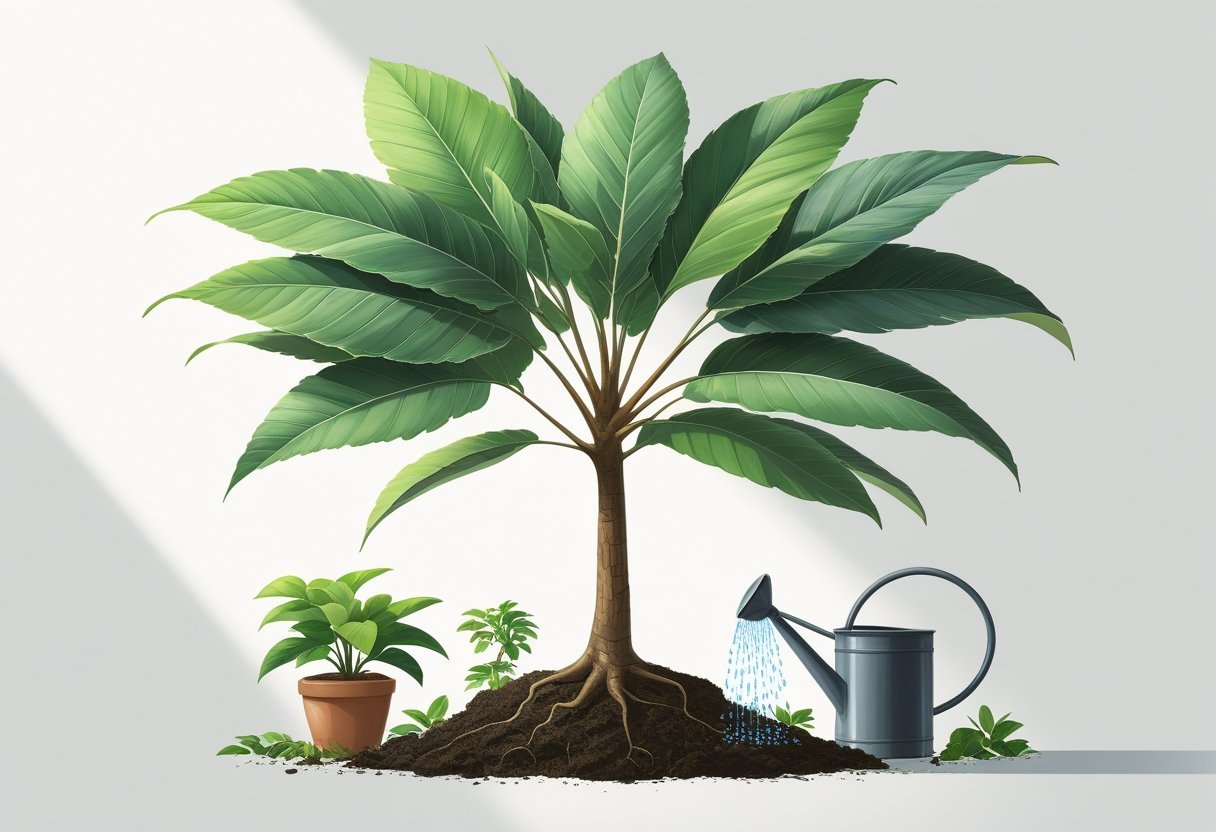The gummy worm tree, or Cecropia peltata if you want to get technical, is a tropical showstopper with wild fruit and huge, dramatic leaves. It’s happiest with loads of sunlight and a humid vibe—think rainforest, not desert. The main thing is to give it plenty of light and keep the watering pretty regular, especially when it’s just settling in.
Once it’s mature, Cecropia can handle a bit of drought, though if you notice leaves dropping or growth slowing, it usually means it’s not getting enough light or water. Remember, this is a plant that evolved in the lush chaos of Central and South America’s rainforests—so the closer you can get to those conditions, the better.
Key Takeways
- Give your gummy worm tree as much sunlight as you can.
- Water it often when it’s young; after a while, it won’t be so thirsty.
- Leaves dropping? It’s probably stressed—usually not enough light or water.
Essential Care for the Gummy Worm Tree
Cecropia peltata isn’t super fussy, but it does have its preferences. Pay attention to light, water, and warmth, and you’ll be rewarded with a healthy, fast-growing tree.
Ideal Growing Conditions
Cecropia trees really take off in warm, humid places. They’ll put up with a surprising range of soils—limestone, sandy, you name it—as long as it drains well. The tree’s a bit of a space hog, too; those leaves can get huge (like two feet across), and the crown spreads wide.
Don’t let the soil get soggy or packed down—roots hate that. In the wild, you’ll spot them in rainforests, where things stay warm and damp pretty much year-round. Good airflow is key, too, since dense foliage can invite disease.
Watering and Soil Requirements
These trees like their soil moist, but not swampy. If you’re dealing with a dry spell, deep watering helps roots grow strong. Just don’t let the roots sit in water, or you’ll end up with rot.
Rich, organic soil is best, but honestly, they’re not super picky. Mulch is your friend—it keeps the soil cool and damp, and breaks down to feed the tree. Heavy clay isn’t ideal unless you work in something to help it drain better. Their adaptability makes them a solid choice for most tropical gardens.
Light and Temperature Needs
Cecropia loves bright light—full sun is perfect, but it’ll cope with a bit of shade (just don’t expect much fruit if you skimp on the sun).
Temperature-wise, shoot for 70°F to 90°F (21°C to 32°C). Anything below 50°F (10°C) can really mess it up, so if you’re in a colder spot, you’ll need to protect it. Strong winds can shred those big leaves, so try to give it a little shelter if you can.
| Factor | Requirement |
|---|---|
| Light | Bright indirect to full sun |
| Temperature | 70°F to 90°F (21°C to 32°C) |
| Soil | Well-drained, organic-rich |
| Watering | Moist but not waterlogged |
Growth, Maintenance, and Troubleshooting
Cecropia is a classic “pioneer” tree—fast, eager, and good at bouncing back from rough conditions. Still, it pays to keep up with pruning and feeding, and to keep an eye out for the usual issues.
Pruning and Training Techniques
A bit of pruning goes a long way. Trim back crowded branches to keep air flowing and light reaching the inner canopy. If you start early, you can shape young trees and avoid that awkward, leggy look.
Cut out anything that’s dead, broken, or rubbing against another branch—it’s just asking for trouble. Once your tree’s grown up, you can ease off the pruning, but don’t ignore it completely. Staking young trees is smart, especially if your area gets gusty.
Fertilization and Nutrient Management
Cecropia responds well to a little extra nutrition. Tossing on some compost or a balanced slow-release fertilizer every few months during the growing season works wonders.
They’re hungry for nitrogen, which makes sense given how quickly they pump out new leaves. Watch the soil pH, and avoid soggy conditions—roots need to breathe. Mulch helps keep things steady and adds nutrients over time.
Common Problems and Solutions
Cecropia trees sometimes deal with yellowing leaves—usually because of too much water or lousy drainage. It’s best to tweak your watering routine so the soil stays damp, not soggy. If you notice aphids or scale insects moving in, a bit of insecticidal soap or neem oil usually does the trick and won’t hurt the tree.
Young trees can drop their fruit if they’re stressed out by drought or a lack of nutrients. Keeping up with watering and tossing on some fertilizer now and then helps a lot. If you spot damaged branches, just prune them off—no need to overthink it. That simple habit goes a long way in keeping fungal problems at bay. Honestly, if you pay attention to the basics, Cecropias are pretty forgiving.





